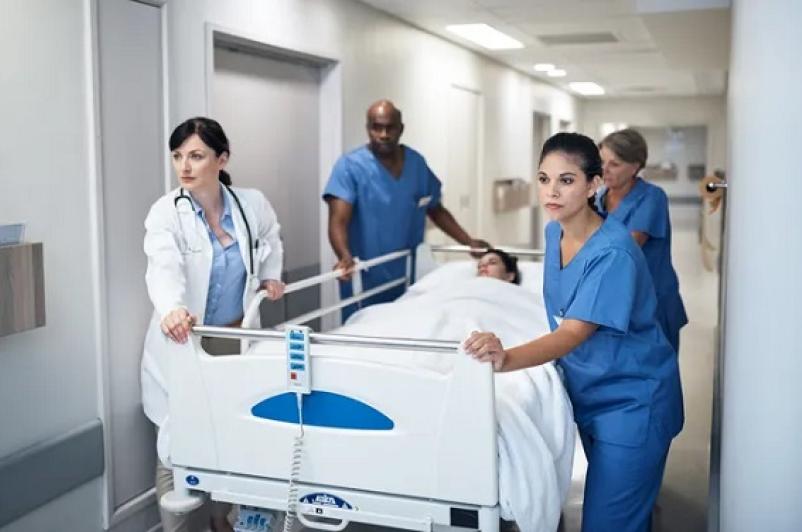
You don’t wake up and decide to pencil in a traumatic injury or accident on your calendar. But if it happens, having a certified trauma center in your community can make all the difference on what might be the worst day of your life. “Access to a coordinated trauma system with a verified trauma center leads to better patient outcomes,” said UHS Trauma Program Manager Bethlehem Emmons-Post, MS, PA-C.
UHS Wilson Medical Center was recently re-verified by the American College of Surgeons (ACS) as a Level II Trauma Center. UHS Wilson Medical Center – the only trauma center in Broome County – has held trauma center designation for 30 years. To earn verification, a hospital must meet more than 100 standards set forth by the ACS for optimal care of the injured patient. These rigorous, evidence-based guidelines ensure the best possible care and outcomes for trauma patients. The standards also specify the physical space and equipment required, what blood products and other specialty supplies must be available, and what specialists must staff the trauma center.
General surgeon Christian Tvetenstrand, MD, has helmed the UHS Trauma Program almost since its inception. Said Emmons-Post, “Dr. Tvetenstrand has dedicated his career to trauma care in this community, including membership on the Regional Medical Advisory Committee that guides EMS and the Regional Trauma Advisory Committee that links area hospitals to ensure a systematic approach to trauma care.”
So, what constitutes trauma? Some of the conditions cited by the National Guidelines for the Field Triage of Injured Patients include skull deformity or fracture, suspected spinal injury, chest wall instability, pelvic fracture, crushed extremities, amputations, active bleeding requiring a tourniquet, penetrating injuries to head, neck, or torso, and other serious injuries. Trauma is a leading cause of death for all ages in the United States and throughout the world.
Said Dr. Tvetenstrand, “The trauma program works with pre-hospital providers to ensure that trauma patients are transported to the best medical center for their needs. UHS trauma team members participate on a variety of emergency medical services committees to ensure accurate triage of trauma patients. Whenever possible, EMS staff notify us in advance so we can prepare staff and medical resources and are ready to implement established protocols to optimize care when the patient arrives.”
Trauma care requires a team. Emergency Department staff, including trauma-trained nurses, stabilize critical trauma patients upon arrival. Physician trauma call at UHS is shared among Dr. Tvetenstrand and vascular surgeon Mark Brennan, DO; general surgeon Peter Ojo, MD; and general surgeon Anishur Rahman, MD, DO. Physician assistants Nicole Carpenter, Katherine Nichols, Lauren Notchick, and Stephanie Orzelek -- all MS, PA-C’s who rotate to provide daily trauma call coverage – maintain advanced trauma life support certification and complete annual continuing education in trauma. Physical therapy and physiatry staff help trauma patients recover as much function as possible post-injury.
As part of its trauma center certification, UHS maintains a trauma registry, staffed by trauma registrars Gerri Allegrino, RHIT, CTR, CSTR; Jenna Dickerson, RHIT; and Rebecca Wager, RHIT, CSTR. They enter patient data into the registry, enabling statistical review and trend analysis to improve patient care. Trauma resource nurses Carly Braman, RN, BSN, and Emily Smith, RN, BSN, review cases and provide injury prevention programs including Stop the Bleed, Impact Teen Driving, Tai Chi for Fall Prevention, and the AARP Safe Driving course.
May is National Trauma Awareness Month, and this year’s theme of “Prevention Is Key: Safety Is A Choice,” focuses on roadway safety. “So much trauma is related to driving – inexperienced, distracted or impaired drivers; lack of knowledge about or disregard for traffic safety – and much of it can be prevented with education and attention,” said Emmons-Post. The month also includes recognition of trauma registrars on May 3, injury prevention professionals on May 10, and trauma survivors on May 17.
For more information about UHS, visit www.nyuhs.org


